#princess chichibu
Explore tagged Tumblr posts
Text
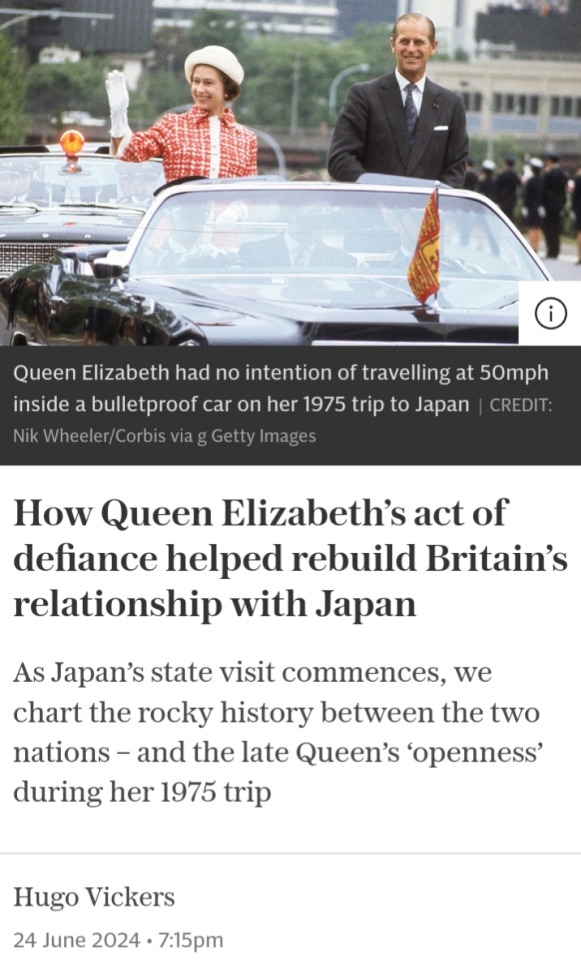
General elections are hardly famous for diplomatic exchanges.
But Rishi Sunak and Keir Starmer are sure to learn some lessons in pragmatism when Emperor Naruhito officially begins his state visit on 25 June.
What will they talk about if they attend the formal banquet at Buckingham Palace, as they are both expected to do, and at which they will perhaps be just a few seats apart?
Naruhito’s unexpected love of the Thames Barrier – he studied the history of cargo-carrying on the river during his spell at Oxford University – will surely appeal.
But the manner in which the British and Japanese royal families have rebuilt bridges after the deep scars of the Second World War might be a more illuminating place to start.
Those scars – the result of Japan’s crimes across the Asia-Pacific and the cruel treatment of British prisoners of war – had left a legacy of resentment that lasted long after the hostilities officially ceased in 1945.
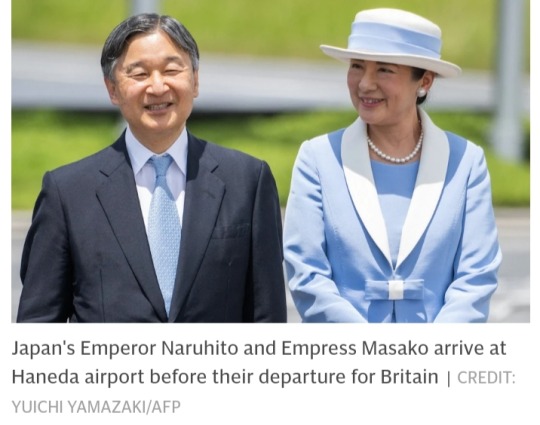
The pressure was on the young Queen Elizabeth II to restore good relations.
Though she rose to the occasion, making huge progress during her reign, the reconciliation was gradual to say the least.
In fact, when official diplomatic relations were restored in 1952, proceedings nearly fell at the first hurdle – over the Emperor’s Garter star.
When the new British Ambassador, Sir Esler Dening, presented his credentials to Emperor Hirohito, the Emperor’s household asked the British Foreign Office if he should wear what they called his “Garter rosette” when he received the ambassador.
The BFO said they preferred that this question had not been asked in the first place, given that Hirohito had of course picked the wrong side to align with during the war.
The exchange also highlighted what a delicate issue Garter honours had become.
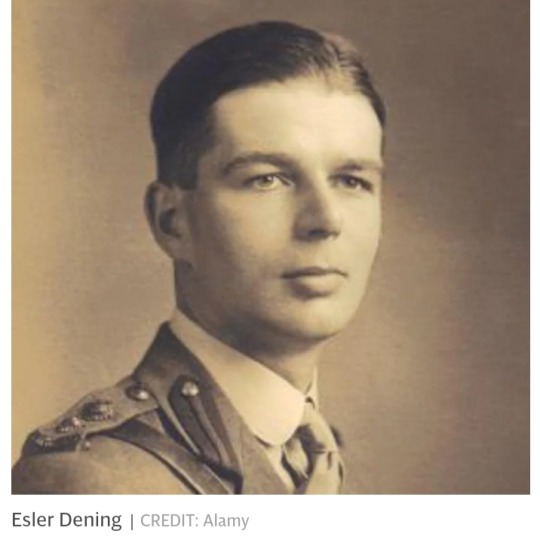
To rewind: It’s a tradition for Japanese Emperors to be made British Knights of the Garter.
By 1952, three had had the honour:
Emperor Mutsuhito, who was appointed in 1906 in recognition of the Anglo-Japanese Alliance of 1902; Emperor Yoshihito in 1912, and his son, Emperor Hirohito in 1928.
Emperor Mutsuhito, who was lucky to be appointed in the first place, had never actually left Japan, and Edward VII did not want him to have it because Mutsuhito was a non-Christian monarch.
But Edward changed his mind after Japan’s 1905 victory over Russia and sent Prince Arthur of Connaught to Tokyo on a Garter mission to present the Emperor with the insignia.
Back then this journey was no trifle:
It took Arthur a month to sail from Marseilles to Yokohama to ask Mutsuhito to accept “the highest mark of friendship and esteem which it is in His Majesty’s power to bestow."
The Emperor was so delighted by the honour that he broke tradition and personally received him at the Imperial Palace.
Yoshihito made it out as far as Korea, but his disabilities and sickly disposition prevented him from much else.
His son Hirohito, meanwhile, was much more used to overseas visits.
He’d already visited Britain as part of a European tour in 1921, when he was a rather shy Crown Prince (the Duke of Windsor, as the Prince of Wales, visited Japan the following year).
After Hirohito succeeded as Emperor in 1926 he was appointed to the Garter, which was the cue for another long trip from England to Japan (this time by Prince Henry, Duke of Gloucester) to invest him.
But during the Second World War, Hirohito was regarded as an enemy alien, and his Garter banner was removed from St George’s Chapel and “placed in the vaults.”
Did he know of his demotion? Surely Dening would have maintained a dignified silence when he was pitching his ambassadorial services in 1952.
But the missing banner did cause minor concern ahead of Crown Prince Akihito’s visit to represent his father at the 1953 Coronation.
Luckily, when he laid a wreath in St George’s Chapel in honour of Queen Mary, who had lately died, he did not notice the absence of the Imperial banner.
Instead, his mind was on more youthful pursuits: during his visit, he was keen to go racing and attend Wimbledon.
Ever the astute hostess, the Queen duly invited him to the Derby.
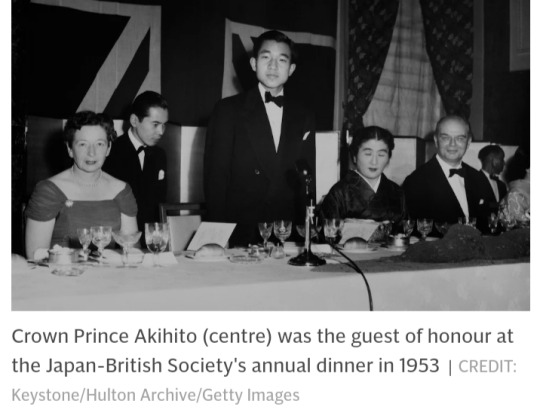
In those early post-war days, the bridge of cordiality that was slowly being built between Japan and Britain was as fragile as kintsugi porcelain.
A more important step towards reconciliation was needed and that came in 1961 when Elizabeth II’s cousin, Princess Alexandra, visited Japan.
She was accompanied by her mother’s private secretary, Sir Philip Hay, who had been a prisoner of war in the Far East, as a result of which he suffered recurring malaria.
Princess Alexandra found the Japanese very friendly but received letters asking why she had gone, since their families had suffered so gravely.
She told me that she gave him a “bottom scraper,” an unfortunately named device used for trawling the sea bed.
He was a marine biologist, having written several books on the subject and collected these objects.
Perhaps this inspired his grandson’s interest.
Whatever the Emperor made of his aquatic gift, he was undoubtedly more pleased by the fact that, during her visit, he was allowed to wear his Garter star.
During these and subsequent years, Princess Chichibu, the Emperor’s sister-in-law, worked tirelessly to improve Anglo-Japanese relations.
Her father had been Japanese Ambassador to Britain and she had been born in Walton on Thames.
With her husband, Prince Chichibu, she had attended the 1937 Coronation.
She became Patron of the Japan-British Society in Tokyo and had a prominent role during Princess Margaret’s visit for British Week in 1969.
At the time, Prince William of Gloucester even served at the British Embassy.
In 1970, King Charles III (as Prince of Wales) visited Japan, and the following year marked the first ever state visit by a Japanese Emperor to Britain when Hirohito landed on our shores once more.
When he accepted Queen Elizabeth II’s invitation, he addressed her as “Madam My Sister” and signed it “Your Majesty’s Good Brother.”
He added in his letter:
“I once visited your country when I was the Crown Prince and have always cherished the pleasant memories of it.”
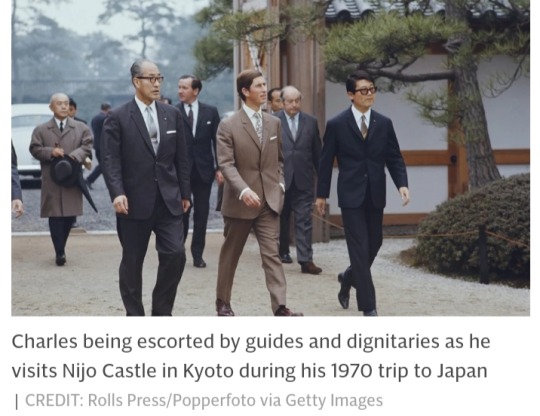
It was enough to restore his full diplomatic standing: he was quietly reinstated into the Order of the Garter, and a new banner raised over his stall.
The British newspapers were less forgiving:
Private Eye produced a particularly disparaging front cover, and David Walker, at the Foreign Office, wrote that his impression was “that the press became more hostile as the visit wore on.”
The public made their feelings known too: though the Emperor’s arrival at Victoria passed off smoothly, a man was arrested in the Mall for a mild incident, and a protester dug up the tree the Emperor planted at Kew.
Many more favourable column inches were devoted to the visit in the Japanese press, but the British Ambassador conceded: “the misdeeds of the past still remain alive.”
The return state visit by Queen Elizabeth II and Prince Philip in 1975 was a game-changer, however.
As part of it, the Queen wanted to drive through Tokyo in an open convertible Cadillac.
But Sir Fred Warner, the British Ambassador, was aware that there was “a tradition in Japan of political assassination” and that the Japanese police had a “proper fear” for the Queen’s safety.
President Gerald Ford had visited shortly before and had been guarded by an astonishing 160,000 Japanese police.
As Warner put it, “might as well have been wearing a cloak of invisibility.”
The original plan for the Queen was that everywhere she went, she should be driven at 50mph in a car with dark bullet-proof glass.
Unsurprisingly, this held no appeal for her: the Queen got her way and what became known as “the Open Car Drive” passed into Japanese history.
Since it passed off well, the Japanese police emerged as heroes of the plan.

The effect was that the Emperor, who led a somewhat cloistered existence, was impressed by the openness of the British Royal family.
The members of the Imperial family “felt that a window had been thrown open and a gust of fresh air let into their lives.”
On both sides, the overwhelming view was that the Queen’s visit, with its innovative approach to visibility, had “marked a significant step towards reconciliation and renewal of old friendships.”
Prince Philip played his part too, making a virtue of lying by omission.
During the state visit he was frequently asked: “Your first visit to Japan?”
“Yes”, he said.
In truth, he had been in Japan in 1945 at the time of the Japanese surrender.
When Emperor Hirohito died in 1989, Prince Philip volunteered to represent the Queen, feeling he was the right person to do so, since he had served in the war and did not mind any criticism that might come.
A decade later, in 1998, it was Hirohito’s son Akihito’s turn to pay a state visit to Britain.
But this time, the press were more pro-actively hostile: one TV station sent a car down to the house of a former POW to film him looking at his photos from the war.
They also took him by car to the Mall to film him setting fire to a Japanese flag – directing the cameras so that the state procession could be seen passing behind him.
This was despite the fact that Emperor Akihito, unlike his father, had played no part in the Second World War.
Akihito was given the Garter on his visit. Naruhito will also receive it on his.
He’s an Anglophile, having attended Oxford’s Merton College between 1983 and 1985.
During that time, while studying the waterways of Britain, he wrote:
“The name of the Thames conjures up in me feelings of affection and nostalgia transcending distance and time.”
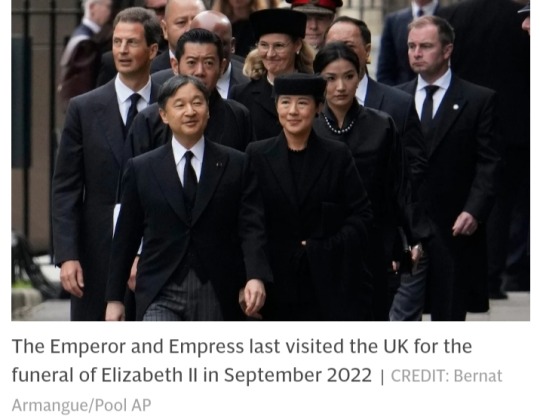
In 2006, King Charles wrote of “the close friendship between the United Kingdom and Japan, which is reflected in the solid bond between the Imperial and Royal Families.”
This visit will further cement that bond – something that the Emperor will reflect on when he privately visits St George’s Chapel at Windsor on June 27 to lay a wreath on the tomb of Queen Elizabeth II.
There, the Garter banner of his father will be above his stall, and the stallplates of his predecessors in their stalls – a permanent record of years of growing friendship.
#Emperor Naruhito#Empress Masako#Queen Elizabeth II#Prince Philip#King Charles III#Imperial House of Japan#Japanese Royal Family#British Royal Family#Japan State Visit 2024#Emperor Hirohito#Sir Esler Dening#British Foreign Office#Garter rosette#British Knights of the Garter#Emperor Mutsuhito#Emperor Yoshihito#Edward VII#Prince Arthur of Connaught#Prince Henry#Duke of Gloucester#Queen Mary#Princess Alexandra#Princess Chichibu#Princess Margaret#Prince William of Gloucester#Sir Fred Warner#US President Gerald Ford#Open Car Drive
15 notes
·
View notes
Text
CHICHIBU SETSUKO // PRINCESS OF JAPAN
“She was a member of the Japanese imperial family and the wife of Yasuhito, Prince Chichibu, the second son of Emperor Taishō and Empress Teimei. They had no children, as Princess Chichibu's only pregnancy ended in a miscarriage. However, by all accounts their marriage was filled with love and happiness for each other. She became president of the Society for the Prevention of Tuberculosis, honorary president of the Britain-Japan Society, the Sweden-Japan Society, and an honorary vice president of the Japanese Red Cross.”


5 notes
·
View notes
Text
As I was doing research for my upcoming fanfiction The Imperial House, a Goong Fusion. Where Tsukushi Makino, the heroine from Hana Yori Dango, ends up finding she is in an arranged marriage to a Prince of Japan who may be a member of the F4. I came across The Silver Drum: A Japanese Memoir which was written by the late Setsuko, Princess Chichibu who married into the Imperial family.
I was able to get a second-hand copy for cheap, that was basically brand new, and so far I have to say Princess Chichibu had a fascinating childhood. Her father gave up his nobility, she may have been the first commoner to marry into the royal family on a technicality. That same father also served as the Japanese Ambassador to the US and she moved to the States. She ended up living in Washington DC and was a student at Sidwell Friends School, where many children of US Presidents attended.
Honestly, I couldn't put this book down. However, after finishing reading this memoir of her life, I'm taking this book with a grain of salt. Clearly, there are things in this work that Princess Chichiburu didn't want to share with us and I respect that. However, I'm grateful this book exists. It did give me an idea of what Tsukushi might deal with in my work. The passages of how Princess Chichiburu felt disconnected from her family because of her status, felt essential for me to read and understand the mindset of a woman becoming part of the Imperial Family.
I wouldn't recommend this book for everyone, especially since it's out of print. However, after I bought my copy I found out my university had an ebook of this novel under another name. If you check your university for Prince and Princess Chichibu: Two Lives Lived Above and Below the Clouds. I gave it a quick look through and this version had more content, including the unabridged version of her memoir.
#the silver drum: a japanese Imperial memoir#princess chichibu#the imperial house#ao3 fanfic#research#fascinating
0 notes
Text

Setsuko, Princess Chichibu and the Princess Alice, Duchess of Gloucester
0 notes
Text

Chichibu Pearl Drop Tiara ♕ Yuriko, Princess Mikasa (assumed)
68 notes
·
View notes
Text











Princess Chichibu’s Pearl Tiara | Honeysuckle Tiara | Princess Chichibu’s Pearl Necklace
0 notes
Photo
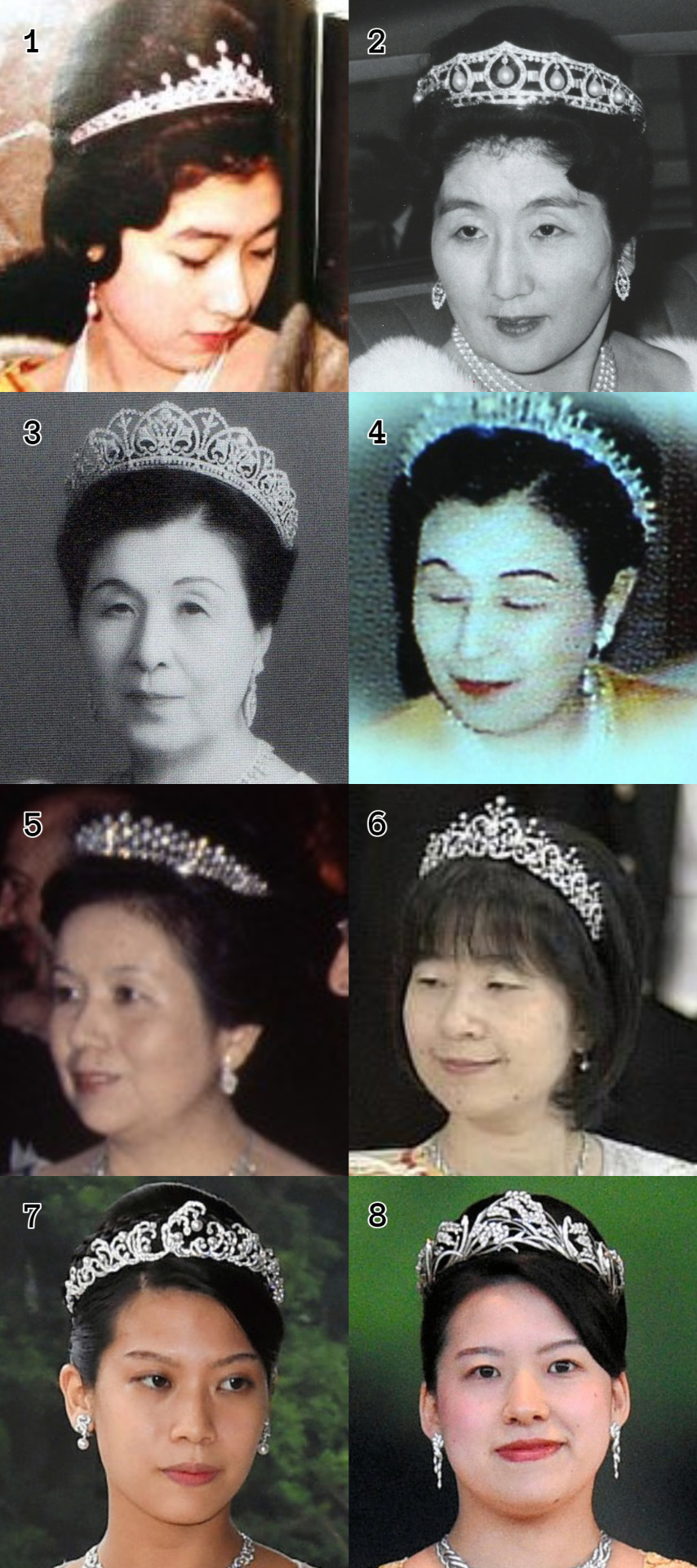
Princess Aiko of Japan’s First Tiara
If Princess Aiko, the Princess Toshi, chooses an older tiara for her 20th birthday instead of having a new one made for her, which tiara would you like to see her pull from the vault?
Princess Yasuko of Mikasa’s Diamond Tiara
Princess Chichibu’s Pearl Drop Tiara
Princess Takamatsu’s Diamond Floral Tiara
Princess Takamatsu’s Diamond Fringe Tiara
Princess Mikasa’s Diamond Tiara
Princess Nori’s Diamond Tiara
Princess Noriko of Takamado’s Pearl Wave Tiara
Princess Ayako of Takamado’s Diamond Wreath Tiara
a different tiara not mentioned here
#First Tiara#Tiara Talk#Princess Aiko#Japan#Princess Toshi#Japanese Imperial Family#tiara#Princess Ayako#Princess Noriko#Princess Mikasa#Princess Sayako#Princess Nori#Princess Takamatsu#Princess Chichibu#Princess Yasuko#tiaras#diadem#diadems#royal tiaras#jewels#royal jewels#royal#royaltyedit#royals#royalty#jewellery#jewelry#crown#crowns#crown jewels
66 notes
·
View notes
Photo

Setsuko, Princess Chichibu and the Duchess of Gloucester in London, 1937
#royalty#royal family#duchess of gloucester#princess chichibu#1930s#1937#london#princess setsuko#princess alice
18 notes
·
View notes
Photo

11 October 2017. Roses "Princess Chichibu" in Jindai Botanical Garden, Tokyo, Japan
#Japan#Tokyo#roses#Nippon#autumn#flower#floralphoto#Princess Chichibu#Jindai Botanical Garden#2017#バラ#神代植物公園#秋#秋のバラフェスタ#日本#東京#Япония#Токио#осень#розы
10 notes
·
View notes
Text


Princess Setsuko of Chichibu is welcomed by Princess Anne prior to their dinner at the British Embassy on April 25, 1983 in Tokyo, Japan
16 notes
·
View notes
Photo


Princess Chichibu’s Honeysckle Tiara Release!!!
Here comes the second most voted tiaras out for the three, the Princess Chichibu’s Honeysckle Tiara by Simpire (Japan/Simpan tiara collection)
This tiara in one at the disposal of Empress Michiko's and is the most delicately designed of the three HIM Tiaras. The tiara features diamond honeysuckle or palmette motifs with large diamonds at the top and in the center, separately by diamond loops filled by lines of diamonds in graduated sizes.
The tiara was worn by Setsuko, Princess Chichibu (1909-1995), who was married to Prince Chichibu, the second son of Emperor Taishō and Empress Teimei. She wore for their wedding photo in 1928, and it may have been a gift to her when she married into the imperial family. Giving tiaras to incoming brides is still a tradition today, and much like those given now, it appears that there was originally a matching necklace and probably a full parure to go along with the diadem. Princess Chichibu was the aunt of the current emperor, Akihito, and the tiara has been worn by Empress Michiko in recent years.
Princess Chichibu's Honeysuckle Tiara stands apart from the other two tiaras in the collection of the Empress because it is the only one not traditionally reserved for empresses, but it shares the same all white color scheme as the rest of the imperial tiaras. This basic honeysuckle/palmette design has been a popular tiara motif over the years.
(from order of splendor)
high poly!
Hat Slider compatible
Custom thumbnail in CAS
Download
Special thanks to @sims4monarchist and @eelise1 for being so kind and willing to test the new cc I’m creating. Thank you both so much!!
#simpire#ts4#monarchy#simnovdynasty#gen1#sims royalty#sims 4 royal#sims 4 royal family#sims 4 royalty#simsroyalty#royalfamilychallenge#simblr#ts4 monarchy#the sims#the sims 4#simpiredownloads#tiaras#tiara#sims 4 tiara#ts4tiara
193 notes
·
View notes
Text
1 note
·
View note
Photo

Princess Chichibu ,バラ,プリンセス チチブ,Rose,Floribunda,花写真,flowerphoto,バラ科,Rosaceae,バラ属,Rosa, #バラ #プリンセスチチブ #Rose #PrincessChichibu #Floribunda #flower #plant #花写真 #flowerphoto #バラ科 #Rosaceae #バラ属 #Rosa #花が好き #写真が好き https://t.co/VgDk0SmwEd
0 notes
Photo




Royal Tiara Challenge 2019 Day 12: A tiara I would want Crown Princess Masako of Japan to wear
Princess Chichibu’s Diamond Honeysuckle Tiara
CP Masako may get this tiara when her husband becomes Emperor. I think it’s really pretty and different from her other tiaras.
Grand Duchess Josephine Charlotte’s Belgian Scroll Tiara
A Luxembourgish tiara originally belonging to Josephine Charlotte and now worn by Maria Teresa. I like the shape and how it is fairly simple, but still has a lot of interest. Perfect for Masako.
#royaltiarachallenge19#cornwallcambridge loves tiaras#grand duchess maria teresa#crown princess masako#japanese imperial family#royal
13 notes
·
View notes
Photo

Chichibu Pearl Drop Tiara ♕ Yuriko, Princess Mikasa (assumed)
#chichibu#princess chichibu#pearl drop tiara#yuriko#princess yuriko#princess mikasa#japanese imperial family#Imperial House of Japan#Japanese royal family#japanese diamond tiara#japanese royal tiara#japanese imperial tiara#japanese imperial jewels#japanese royal jewels#pearl jewelry#pearl tiara#diamond jewels#Diamond Jewelry#Diamond Tiara#royal jewels
31 notes
·
View notes
Photo


Royal Tiara Challenge 19 Day 12: A tiara you would like to see Crown Princess Masako of Japan wear - Princess Chichibu Diamond Honeysuckle Tiara
Please please please. Let her wear this on the day of Naruhito coronation! I’m dying to see her in this tiara. I think that the save choice is the Chrysanthemum tiara because of the symbolism, but if she wears the Honeysuckle I will cry tears of joy.
11 notes
·
View notes